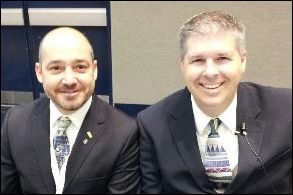Chuck Marohn and Joe Minicozzi, principals with Strong Towns and Urban3 respectively, travel the country telling cities, towns and counties how to build better communities while remaining fiscally solvent. I have borrowed heavily from both Chuck and Joe in my writing about land use, transportation and community building, and it’s reassuring to see that as their own thinking evolves, it has moved in concert with mine.
Most recently, Chuck has blogged about the paucity of useful information cities have to guide them in make zoning and capital spending decisions. He makes many of the same points I did in my recent post, “How Planners Can Rescue Virginia from the Fiscal Abyss.” Writes Chuck:
Despite running corporations (most cities are “incorporated” municipalities) that have billions of dollars in assets and liabilities and annual cash flows in the tens, and sometimes hundreds, of millions of dollars, few ever ponder some shockingly simple questions.
- What are our total assets, the value of the tax base that constitutes our community’s wealth?
- What are the long term obligations for infrastructure maintenance associated with sustaining those assets?
- In terms of geography, what parts of our community have a positive Net Present Value (cash from long term assets minus the cost of long term liabilities) and which have a negative Net Present Value?
The answers to these questions constitute a community’s balance sheet, the most basic of accounting requirements for any family or business but one which cities largely ignore. …
Since we don’t know the answer to these basic questions, we can’t even begin to ponder some more sophisticated, but obvious, things that all cities face.
- How does that tax base change in response to certain policy decisions?
- What types of land use patterns create the most wealth for the community?
- What types of land use patterns experience the greatest degree of volatility?
- How does a park impact Net Present Value? How far from the park does that effect extend?
- How does a stroad impact Net Present Value? How far from the stroad does that effect extend?
- Where can we deploy limited resources to have the greatest overall impact?
Keep up the good work, Chuck and Joe!
— JAB



